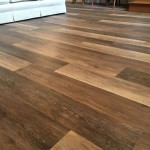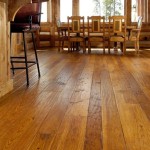How To Repair Vinyl Flooring Seams On Stairs
Vinyl flooring is a popular choice for staircases due to its durability, water resistance, and relatively low cost. However, the seams between vinyl pieces, particularly on stairs, are prone to wear and tear. Over time, they can separate, peel, or become damaged, creating an unsightly and potentially hazardous condition. Addressing these issues promptly is crucial to maintaining the integrity and safety of the staircase. This article details the process of repairing vinyl flooring seams on stairs, offering practical guidance to achieve a professional-looking result.
Before commencing any repair work, a thorough assessment of the damage is necessary. This inspection will help determine the cause of the seam separation and the most appropriate repair method. Identifying the underlying issues, such as inadequate adhesive application, excessive foot traffic, or moisture exposure, is critical to preventing future problems. The extent of the damage will dictate whether a simple resealing is sufficient or if a more extensive repair, involving patching or replacement, is required.
Safety is paramount when working on stairs. Secure the area by using caution tape or barriers to prevent accidental falls. Good ventilation is also important, especially when using adhesives or solvents. Wear appropriate personal protective equipment (PPE), including gloves and eye protection, to safeguard against potential hazards. Ensure adequate lighting to clearly see the work area and identify potential risks.
Preparing the Area for Repair
The first step in repairing a vinyl flooring seam on stairs is to thoroughly clean the affected area. This involves removing any dirt, debris, or old adhesive residue that may be present. A stiff brush and a mild detergent solution can be used to scrub the seam and surrounding vinyl. Pay particular attention to ingrained dirt, which may require the use of a specialized vinyl cleaner. After cleaning, rinse the area with clean water and allow it to dry completely.
Once the area is clean, inspect the seam closely to identify any loose or damaged vinyl. Remove any loose pieces of vinyl with a utility knife, taking care not to damage the surrounding flooring. If the edges of the vinyl are frayed or uneven, trim them with a sharp utility knife to create a clean, straight edge. This will ensure a better bond when applying adhesive or sealant.
If the subfloor beneath the vinyl is damaged or uneven, it must be repaired before proceeding with the seam repair. Fill any cracks or holes with a patching compound designed for underlayment. Follow the manufacturer's instructions for mixing and applying the patching compound. Allow the compound to dry completely before sanding it smooth to create a level surface. A smooth and stable subfloor is essential for a long-lasting and durable repair.
In some cases, the old adhesive may have deteriorated, leaving a gap between the vinyl and the subfloor. This gap needs to be filled before resealing the seam. Use a flexible filler designed for flooring applications to fill the gap. Apply the filler with a putty knife, ensuring that it is evenly distributed and flush with the surrounding vinyl. Allow the filler to dry completely before proceeding.
Resealing a Vinyl Flooring Seam
For minor seam separations, resealing may be sufficient to restore the integrity of the flooring. This involves applying a vinyl seam sealant to the exposed edge of the vinyl. Choose a sealant that is specifically designed for vinyl flooring and that matches the color of the existing flooring as closely as possible. Test the sealant in an inconspicuous area first to ensure that it is compatible with the vinyl and that the color match is satisfactory.
Apply the sealant using a caulking gun, ensuring that the nozzle is properly sized to fit the seam. Apply a thin, even bead of sealant along the entire length of the seam. Avoid applying too much sealant, as this can create a messy and uneven finish. Use a damp cloth or sponge to wipe away any excess sealant immediately. A seam roller can then be used to press the sealant into the seam, ensuring a strong and watertight bond.
Allow the sealant to dry completely according to the manufacturer's instructions. This may take several hours or even overnight, depending on the type of sealant used. Avoid walking on the repaired area until the sealant is fully cured. Once the sealant is dry, inspect the seam to ensure that it is properly sealed and that there are no gaps or voids. Apply a second coat of sealant if necessary.
In instances where the original seam was heat-welded, replicating this method requires specialized equipment and expertise. Heat welding creates a permanent, fused bond between the vinyl sheets. Without the proper tools and knowledge, attempting to heat-weld the seam can damage the flooring. In such cases, consider consulting a professional flooring installer to ensure a proper and durable repair.
Patching Damaged Vinyl Flooring
When the vinyl flooring is severely damaged or missing, patching may be necessary. This involves cutting out the damaged section of vinyl and replacing it with a new piece of vinyl of the same size and shape. The first step is to obtain a matching piece of vinyl. If possible, use leftover material from the original installation. Otherwise, try to find a close match at a flooring store. Color and pattern matching is crucial for a seamless repair.
Using a utility knife and a straight edge, carefully cut out the damaged section of vinyl. Make sure to cut along the existing seams or edges of the vinyl to create a clean and precise cut. Use the cut-out section as a template to cut a new piece of vinyl of the same size and shape. Place the template on the new piece of vinyl and trace around it with a utility knife. Cut the new piece of vinyl slightly larger than the template to allow for trimming and adjustment.
Apply adhesive to the subfloor in the area where the new piece of vinyl will be installed. Use a vinyl flooring adhesive that is recommended by the vinyl manufacturer. Apply the adhesive evenly with a notched trowel, following the manufacturer's instructions for the appropriate spread rate. Allow the adhesive to tack up slightly before installing the new piece of vinyl.
Carefully position the new piece of vinyl over the adhesive-covered area. Align the edges of the new piece of vinyl with the surrounding vinyl. Press the new piece of vinyl firmly into the adhesive, ensuring that it is properly bonded to the subfloor. Use a seam roller to roll over the entire surface of the new piece of vinyl, removing any air bubbles and ensuring a strong bond.
Once the adhesive has dried, trim any excess vinyl around the edges of the patch. Use a utility knife and a straight edge to create a clean and precise cut. Seal the seams around the patch with a vinyl seam sealant to prevent moisture from penetrating beneath the flooring. Allow the sealant to dry completely before walking on the repaired area. Feathering the edges of the patch with fine-grit sandpaper can help blend the new vinyl with the existing flooring.
For complex patterns or textures, achieving a perfect match during patching can be challenging. In such cases, consider consulting with a professional flooring installer. They possess the expertise and tools to seamlessly integrate the patch into the existing flooring, ensuring a visually appealing and durable repair.
Preventative Measures to Avoid Seam Damage
Several measures can be taken to prevent future seam damage on vinyl flooring on stairs. Regular cleaning and maintenance are essential. Sweep or vacuum the stairs regularly to remove dirt and debris. Clean the flooring with a mild detergent solution and a damp mop. Avoid using harsh chemicals or abrasive cleaners, as these can damage the vinyl and weaken the seams.
Protect the vinyl flooring from excessive wear and tear by using stair treads or runners. These can help to distribute foot traffic and reduce the stress on the seams. Choose stair treads or runners that are slip-resistant to prevent accidents. Replace worn or damaged stair treads or runners promptly to maintain their effectiveness.
Address any moisture issues promptly. Water can seep into the seams and cause the adhesive to deteriorate, leading to seam separation. Ensure that the stairs are properly sealed and that there are no leaks or water damage. If moisture is a recurring problem, consider installing a moisture barrier beneath the vinyl flooring.
When installing vinyl flooring on stairs, proper installation techniques are crucial. Ensure that the subfloor is smooth, level, and dry before installing the vinyl. Use a high-quality vinyl flooring adhesive and follow the manufacturer's instructions carefully. Apply the adhesive evenly and ensure that the vinyl is properly bonded to the subfloor. Pay particular attention to the seams, ensuring that they are tightly sealed and properly aligned.
Regular inspections of the vinyl flooring seams can help identify potential problems early on. Check the seams for signs of separation, peeling, or damage. Address any issues promptly to prevent them from escalating into more serious problems. By taking these preventative measures, it is possible to extend the life of the vinyl flooring and avoid costly repairs.

Fix Lvp Stair S With Wood Filler

How To Install Vinyl Sheet Flooring On A Staircase

How To Repair Vinyl Flooring Fixing Sc Bubbles More

Easy Diy Staircase Makeover Using Vinyl Plank Flooring Anika S Life

How To Repair Vinyl Flooring Fixing Sc Bubbles More

Easy Diy Staircase Makeover Using Vinyl Plank Flooring Anika S Life

Diy Lvp Laminate Floor Seam Fix Thediytraill Onthisday Tiktok

How To Repair Vinyl Flooring Fixing Sc Bubbles More

Fixing Tears In Vinyl Flooring A Step By Guide

How To Replace Sheet Vinyl Flooring Step By Diy Guide
Related Posts








